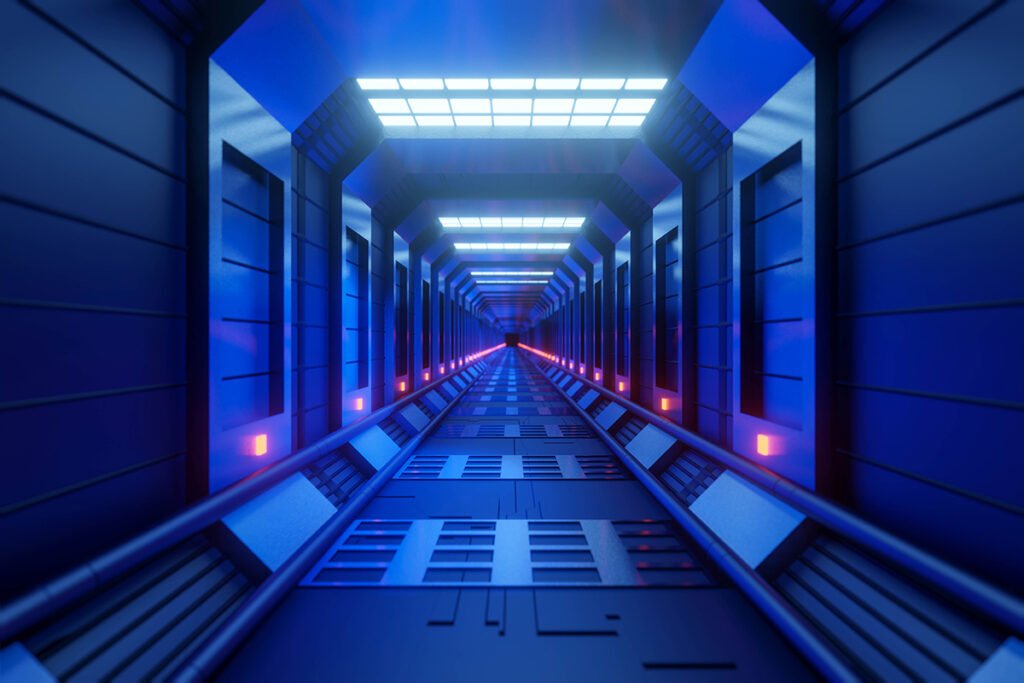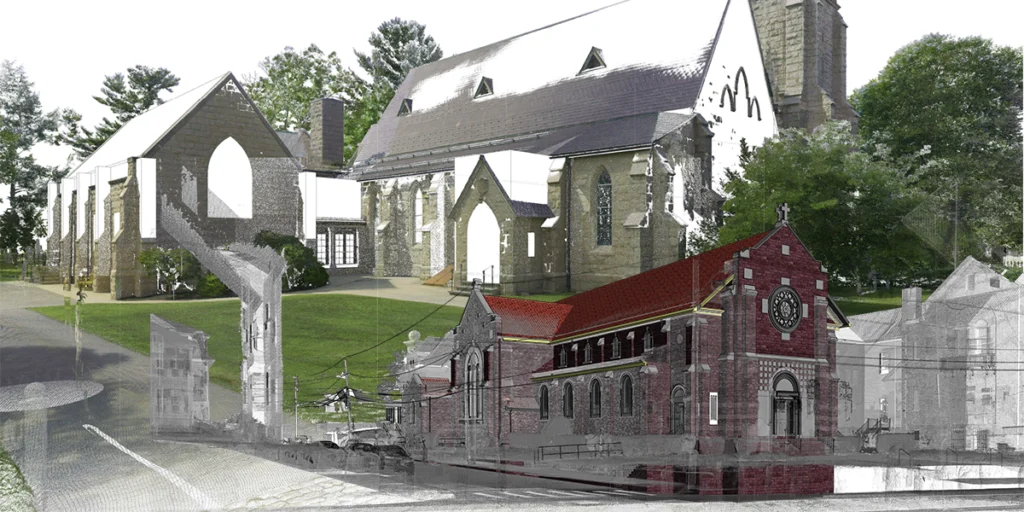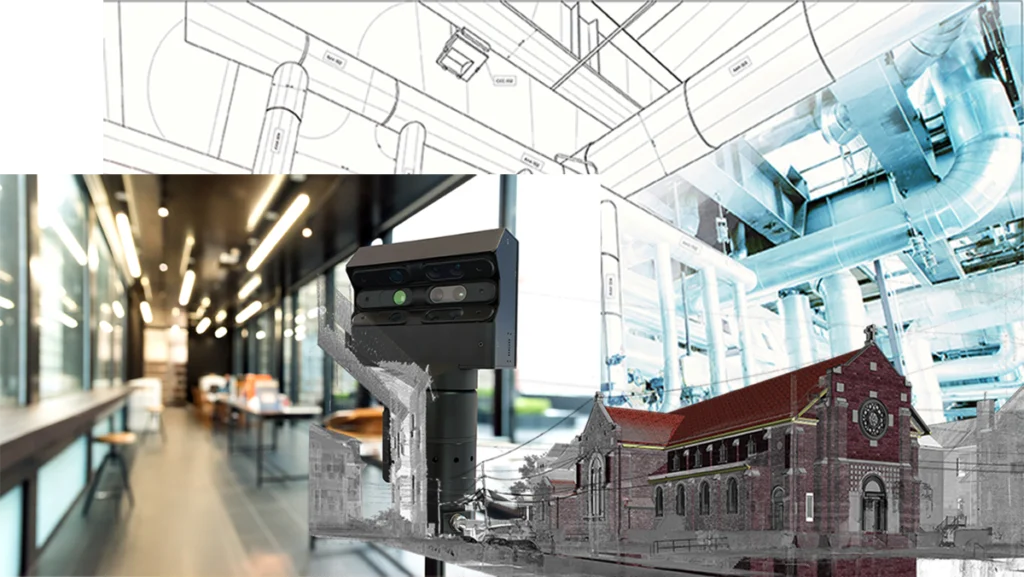Reduce Costs with Scan to BIM Outsourcing
Published Date
Last Modified

- Reduce Costs with Scan to BIM Outsourcing
- Challenges to Reduce Costs with Scan to BIM Outsourcing
- Applications of Scan to BIM
- Renovation Projects
- Scan to BIM for Construction Verification
- Scan to BIM for Industrial Plants
- Scan to BIM for Facility Management
- Scan to BIM for Heritage Buildings
- Bimsrv as your Preferred Partner in Outsourcing Scan to BIM Services
Reduce Costs with Scan to BIM Outsourcing – Key Insights
Outsourcing scan to BIM services has become an important strategy for companies in architecture and construction. It helps them work more efficiently and save money.
By leveraging specialized expertise, companies can streamline project workflows and enhance accuracy, ultimately leading to improved project delivery and lower expenses.
However, several challenges come with outsourcing that must be effectively managed to achieve these goals.
This article will explain how scan-to-BIM services can help different projects. These include industrial plants and renovation projects. Using these services can save money.
Let’s explore the potential advantages and the solutions to navigate the challenges of this innovative approach.
Challenges to Reduce Costs with Scan to BIM Outsourcing
Reduce Scan to BIM Outsourcing can present several challenges:
- Quality Control: Ensuring the accuracy and quality of the scanned data can be difficult. It’s essential to verify that the outsourced team follows the correct standards and procedures.
- Communication Gaps: Clear communication is crucial in BIM projects. Misunderstandings due to language barriers or different time zones can lead to errors.
- Data Management: Properly managing and transferring large datasets can be challenging. There may be issues with file compatibility or data loss during transfer.
- Integration Issues: Bringing together outsourced models with existing workflows and systems can be complex, potentially causing delays.
- Cultural Differences: Different work cultures may affect collaboration and project execution, making alignment on objectives and practices more difficult.
- Cost Variability: While outsourcing can be cost-effective, unexpected expenses can arise from rework or quality issues.
To address these challenges, careful planning and clear communication are essential. A thorough understanding of the expectations in the Scan to BIM outsourcing process is also necessary to effectively Reduce Costs with Scan to BIM Outsourcing.
Applications of Scan to BIM
1. Renovation Projects
Many businesses are now choosing to Reduce Costs with Scan to BIM Outsourcing to enhance their workflows and achieve greater efficiency.
To effectively Reduce Costs with Scan to BIM Outsourcing, companies often utilize advanced technologies that ensure high-quality results.
Understanding how to Reduce Costs with Scan to BIM Outsourcing can lead to significant savings in long-term project management.
Utilizing Scan to BIM is excellent for renovation projects. It offers precise and detailed 3D models of existing buildings. This assists architects and engineers in better understanding the space.
2. Construction Verification
The method allows teams to check if new construction aligns with the original plans. By comparing 3D scans with BIM models, discrepancies can be identified and corrected efficiently.
3. Scan to BIM for Industrial Plants
Scan to BIM for industrial plants involves using scanning technology to capture the current state of a plant. This process aims to create a detailed 3D model of the existing structure. The main goal is to help in planning renovations or improvements to the plant.
4. Facility Management
With comprehensive and up-to-date models, facility managers can plan and manage maintenance activities more effectively. It provides a precise record of building modifications over time.
5. Historical Preservation
Scanning historic buildings for BIM models aids in their preservation. The detailed documentation ensures accurate restoration and protects cultural heritage.
Using Scan to BIM for heritage buildings often includes unique approaches to Reduce Costs with Scan to BIM Outsourcing.
Renovation Projects
Scan to BIM for renovation projects involves using 3D scanning technology to capture existing structures accurately. This data is then converted into a Building Information Model (BIM) using software like Revit.
The process typically includes the following steps:
Reducing costs with Scan to BIM Outsourcing involves evaluating potential vendors and ensuring they align with quality standards.
For renovation projects, adopting strategies to Reduce Costs with Scan to BIM Outsourcing enhances both efficiency and precision.
- 3D Scanning: A laser scanner collects detailed measurements of the building’s current condition, creating a point cloud model.
- Data Processing: The point cloud data is processed and cleaned to remove any noise or irrelevant information.
- Modelling in BIM: The cleaned data is imported into Revit. Here, architects and engineers create a detailed 3D model of the existing structure.
- Design Integration: The BIM model is used to plan renovations, allowing for better visualization and coordination among various stakeholders.
Implementing effective measures to Reduce Costs with Scan to BIM Outsourcing can significantly increase profitability.
The benefits of using Scan to BIM for renovations include increased accuracy, better project visualization, and improved collaboration. These factors ultimately lead to more efficient project execution.
When managing industrial plants, it is crucial to identify areas where you can Reduce Costs with Scan to BIM Outsourcing.
Scan to BIM for Construction Verification
Scan to BIM for construction verification involves using 3D laser scanning to create accurate digital models of existing structures. This process ensures that construction aligns with the design intent. It does this by comparing the actual built conditions to the BIM (Building Information Model).
By choosing to Reduce Costs with Scan to BIM Outsourcing, organizations can enhance their competitive edge in the market.
Facility managers are increasingly adopting strategies to effectively reduce costs through Scan to BIM outsourcing.
The steps typically include:
- Data Collection: Use a 3D laser scanner to capture detailed measurements of the existing site or building.
- Point Cloud Creation: The scanned data creates a point cloud, representing the physical space in a digital format.
- BIM Modeling: Convert the point cloud into a BIM model using software like Revit. This model reflects the current state of the building.
- Verification and Comparison: Compare the BIM model with the actual construction. This helps identify discrepancies, allowing for timely corrections.
- Documentation: Keep records of the verification process for quality assurance and future reference.
Using scan to BIM enhances accuracy and reduces errors during construction, ultimately leading to better project outcomes.
Scan to BIM for Industrial Plants
Scan to BIM for industrial plants involves using 3D scanning technology to create accurate digital representations of existing structures. This process captures physical environments in detail, producing point clouds that can be converted into BIM models.
The benefits of Scan to BIM in industrial settings include:
- Accuracy: Captures precise measurements and details of plants, minimizing errors during the design phase.
- Efficiency: Speeds up the modelling process by providing an immediate and detailed reference of existing conditions.
- Visualization: Helps stakeholders visualize the plant layout, facilitating better planning and decision-making.
- As-Built Documentation: Creates reliable as-built records for maintenance and future renovations.
- Collaboration: Enhances teamwork among architects, engineers, and contractors by providing a unified digital model.
The effective use of Scan to BIM can create opportunities to reduce costs through outsourcing in various projects.
Incorporating strategies that allow you to Reduce Costs with Scan to BIM Outsourcing can improve overall project outcomes.
When considering construction verification, teams need to identify how to Reduce Costs with Scan to BIM Outsourcing effectively.
Overall, Scan to BIM is a valuable tool for improving design, construction, and management in industrial plants.
Scan to BIM for Facility Management
Scan to BIM for Facility Management uses the innovative process of Architectural Scan to BIM. This method employs advanced Laser Scanning technology to accurately capture the features of existing facilities. This method involves creating detailed as-built scans of a building. These scans are then transformed into comprehensive 3D Revit models. These models represent physical dimensions and layouts. They also include essential data for effective facility management. This helps streamline operations and maintenance tasks. By combining real-world measurements with digital modeling, facility managers obtain a valuable tool. This tool improves their ability to oversee and manage properties effectively
Scan to BIM for Heritage Buildings
Scan to BIM for Heritage Preservation is a vital method for documenting and preserving heritage buildings. This technique uses advanced scanning technologies, like laser scanning and photogrammetry, to create accurate 3D representations of existing structures. These scans provide detailed information about the building's shape, texture, and layout. This data serves as the foundation for further analysis in BIM software.
The process starts with high-resolution scans that produce point clouds, which are sets of data points that outline the structure’s surface. This data can be imported into BIM software like Revit. There, it is transformed into a detailed 3D model. This model serves as a digital replica, aiding in planning renovations and conserving the building’s historical significance.
Using scan data in BIM fosters collaboration among architects, engineers, and preservationists, improving decision-making throughout the project. It allows for the analysis of structural integrity, evaluation of modifications, and visualization of proposed changes to the building’s historical aspects. Additionally, these 3D models can be valuable for educational purposes, enhancing future generations’ understanding of architectural heritage.
In summary, the Scan to BIM process merges technology with history. By employing 3D scanning and BIM, professionals can preserve these important structures and provide reliable references for ongoing research in architectural conservation. This approach helps keep our architectural heritage alive and relevant today.
Bimsrv as your Preferred Partner in Outsourcing Scan to BIM Services
By leveraging techniques to Reduce Costs with Scan to BIM Outsourcing, teams can optimize their workflows and resource allocation.
Discover the advantages of our cost-effective scan to BIM outsourcing services. This includes our expert Point Cloud to Revit Modeling Services. Get in touch with us today to learn how we can help elevate your projects and maximize your budget!
Engaging with experts who understand how to Reduce Costs with Scan to BIM Outsourcing can help streamline operations significantly.
Ultimately, many businesses seek to reduce costs. They do this by outsourcing Scan to BIM services. At the same time, they strive to maintain quality.
Scanning heritage buildings to reduce costs through Scan to BIM outsourcing helps preserve historical integrity while managing budgets effectively.


